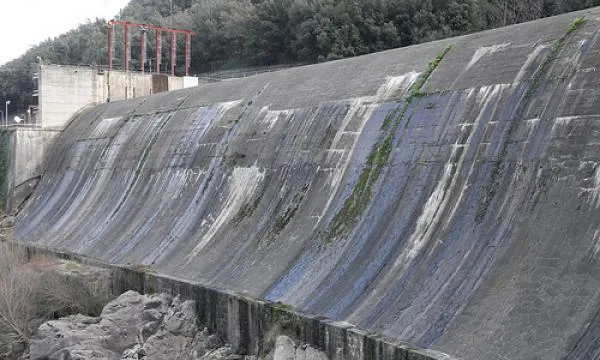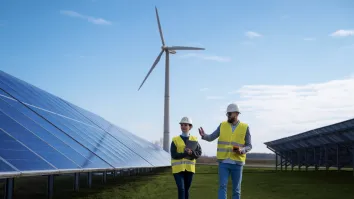
Geopolitics, social risks complicate Asia's large hydropower aspirations
Two hotbeds for large hydropower development — the Himalayas and Mekong River — depict its potential and limitations.
When the development for Nepal’s two keystone large hydropower projects were plunged in uncertainty over the past year as the country’s government cancelled the $2.5b Budhi Gandaki hydropower project and renegotiating the $1.8b West Seti project, it served to illustrate the geopolitical and social challenges such mega projects are facing in Asia. Analysts reckon Asian countries in the Himalayas and Southeast Asia stand to benefit tremendously from large hydropower projects from an energy supply standpoint, but large hydro projects have been complicated by changes in political regimes, inter-regional power plays, and social opposition due to their potential impact on the environment and local communities.
Snags in Nepal projects
In the case of Nepal, its energy cooperation with China has recently hit a snag after the previous government terminated a licence awarded to China’s Gezhouba Group in late 2017 to build a 1.2GW hydropower plant, which would have been the country’s largest, due to supposed lapses in the awarding process. Meanwhile, the current government is set to hold final talks with China Three Gorges Corporation to determine the fate of a proposed 750 MW hydropower plant, Investment Board Nepal spokesperson Uttam Bhakta Wagle told the Kathmandu Post in early August. Earlier reports suggested the latter deal had been cancelled, which Beijing denied.
“The hydropower dams are a major part of Nepal’s 10-year plan to develop 10 GW of power. Nepali officials have long hoped to secure investment from China to exploit its rich hydropower resources and ease the country’s chronic energy shortages,” said Abhaya Raj Joshi from the London-based non-profit Chinadialogue in late June. “These are the country’s largest reservoir dams and its biggest foreign investments. Both projects were awarded to Chinese government-backed companies, but the licence for Budhi Gandaki was scrapped and the one for West Seti is in limbo.”
Nepal — a country with large, untapped hydropower potential — has received considerable investment in the sector from Beijing as part of China’s regional cooperation and trade-linking Belt and Road Initiative (BRI). China has made the most progress in hydropower development amongst the Himalayan nations, driven by the country's insufficient fossil fuel reserves, push for energy independence and environmental concerns, noted Nilanjan Ghosh, senior fellow and head of economics at ORF.
Joshi argued that Chinese investment is crucial for Nepal, citing how most of the country’s hydropower projects built in the past few decades were of the smaller run-of-the-river type whose generation capacity peaks during the monsoon then weakens in the dry season. “This is why the government wants to build mega reservoir-type projects, like West Seti. China and India seem to be the only countries interested in building mega dams in the region, but they are also facing tough resistance from local activists and communities whose lands will be submerged by large reservoirs.”
Nepal’s former ambassador to Beijing Tanka Karki has said that China is the best option for Nepal, arguing that neighbouring India does not have the resources to build mega projects whilst Europe and the US are not in a position to invest in big projects. Still, in May, Indian Prime Minister Narendra Modi visited Kathmandu for the groundbreaking of a 900 MW hydropower project to be built by state-run Indian firm Satluj Jal Vidyut Nigam (SJVN) Limited, representing India’s single-biggest foreign investment project in Nepal.
This jostling for influence in Nepal could weigh on hydropower development in the Himalayan nation. The contest for influence between China and India is rapidly intensifying in South Asia, said Aditya Valiathan Pillai, program officer at The Asia Foundation, and one of the authors of its report electricity trade and hydropower development in Asia.
“India's objectives for electricity trade in the BBIN (Bangladesh, Bhutan, India, Nepal) sub-region are shaped by China's recent overtures to neighbors in South Asia; Indian policy on regional electricity trade serves the purpose of ring-fencing Chinese influence in the energy sectors of South Asian neighbors by imposing conditions on access to India's vast demand base,” he said.
Private players’ challenges
Ghosh flagged serious concerns with private players exiting the hydropower sector, especially in India. “The crucial problem is sheer lack of understanding of the economics of hydropower in the Himalayas,” he said. “One needs to understand the tough terrain, the fluvial geomorphology, the unique nature of the Himalayan rivers, and the vulnerable Himalayan ecosystem before any hydropower project is taken up.”
Much of the problems related to hydropower development in the region stems from the lack of a “holistic understanding” of the economics of hydropower, including insufficient consideration for broader social and ecological forces, according to Ghosh. Developers have reported delays in environmental and forest clearances that have generated apprehensions.
“Project execution on the tough terrain of the Himalayan rivers often makes it difficult for developers to build the plants. What adds up to the transaction costs are illegal constructions in the floodplains, the eviction of people living there and their resettlement, as well as rehabilitation projects,” he said. “In situations where the resettlement and rehabilitation are not proper, social conflicts occur which result in escalating social costs” such as those seen in the Subansiri low dam over the Brahmaputra, and the Tehri dam in Uttarakhand.
Ghosh also reckoned developers operating in the Himalayas that use the traditional cost-benefit analysis also often fail to consider factors related to global warming and climate change that could impact the viability of projects. “Despite the growing attention to assess the vulnerability of freshwater to global change, basin-wide assessments on the impacts of climate and land use change on freshwater availability remains quite limited,” he said.
“Embarking on any large hydropower project in the Hindu Kush Himalayan region is currently fraught with a range of technical and non-technical challenges, mainly due to the threat to socio-economic resources, biodiversity and potential downstream threats and impacts, including impacts of seismic activities,” added Ghosh. “The protest against hydropower projects in the northeast of India has been primarily related to the downstream impacts, with no sincere efforts visible to address the issues adequately.”
Social risks in Southeast Asia
Meanwhile, in Southeast Asia, social and environmental risks feature prominently as the key challenges to wider adoption of large hydropower projects as opposed to smaller hydropower projects that have been largely embraced in the region so far. "As with other renewables, such as solar and wind, the main barriers to further hydropower development are inconsistent policy frameworks, unclear regulations, and mostly the social and environmental opposition that often accompanies large hydro projects," said Divyam Nagpal, associate programme officer for policy at International Renewable Energy Agency. "Each country is approaching these challenges differently."
He noted that in Laos, nearly all electricity is derived from hydro, and the government plans to develop an additional 24GW of capacity in the coming years, with an eye for export. Meanwhile, in Myanmar, despite the strong need for additional power as the national electrification rate hovers around 35%, there has been hesitation to proceed with large hydropower projects due to significant public and civil society opposition.
"Looking ahead, if developers and governments are able to scale deployment of small-hydropower and run-of-river technologies that avoid some of large hydro’s social and environmental risks, countries across the region will have a significant opportunity to contribute to their clean energy targets," said Nagpal.
IRENA cited the successful deployment of micro-hydropower plants in Indonesia that have birthed new businesses in egg hatchery, rice milling, coffee grinding and bread making. Whilst in rural Myanmar, improved and mechanised irrigation powered by a micro-hydro project bolstered the quality of farmers’ yields and profits.
"Small hydropower has thrived in Southeast Asia, meeting localised energy needs and contributing to the development of a local industry in some countries. Small hydro projects have reduced environmental and social impacts compared to non-run of river projects, shorter and simpler development, less-intense finance and construction phases than larger projects, and are being deployed in both on- and off-grid configurations,” said Nagpal. In terms of capacity, Vietnam, the Philippines, Thailand, Indonesia and Malaysia are pulling ahead in Southeast Asia.
“In the region, a clear distinction is made between large and small hydropower,” said Nagpal, but pointed out that the threshold for defining small hydro varies across countries. In Indonesia, it could be up to 10 MW, but is higher at up to 15 MW in Laos and Thailand, and could reach up to 30 MW in Vietnam.
As a sign of its growth in Southeast Asia, hydropower accounted for 16% of the region's power generation mix in 2015, the third-largest behind natural gas at 41% and coal at 33%, according to IRENA. This is in line with the ten-member Association of Southeast Asian Nations’ agreement to reach a target of 23% renewables in their total primary energy supply, including large-scale hydropower but excluding traditional biomass, by 2025.
Large hydropower comprised over three-fourths of the renewable generation mix in Southeast Asia, but its share in total installed capacity fell to 75% in 2016 from 80% in 2000, following similar declining trends in other regions such as Latin America. Despite the lower share, large hydropower is the dominant source of renewable electricity in the region and directly employs 167,000 people in construction and installation, operation and maintenance and manufacturing, the agency said.
Between 2000 and 2016, hydropower capacity in the region grew from nearly 16 GW to 44 GW, according to IRENA, led by countries in the Mekong River Basin such as Laos, Cambodia, Myanmar and Vietnam. Large hydropower development has shown a “substantial” increase from 6 GW to 26 GW over the past decade, with Vietnam and Laos at the forefront of this expansion as financing options have swelled.
“As the renewable energy sector has grown, the capital mix and the range of financing institutions engaged has also evolved. Development finance has been crucial in backing large hydropower, geothermal and bioenergy projects, followed by rising private sector investments, supported through public-private partnership models and carbon markets," said Nagpal.
In this regard, large hydro has seen some momentum. Hydropower attracted $1.8b from development banks, accounting for 30% of cumulative investment over the period of 2009 to 2016. Development banks backed the construction of large hydropower plants such as the 290 MW Nam Ngiep 1 Hydropower Project in Laos, which received financing from the Asian Development Bank,Japan Bank for International Cooperation and the Japan International Cooperation Agency. By comparison, solar power obtained only about 12% of the total.
IRENA also highlighted another key growth driver: Southeast Asia has seen the costs of hydro, geothermal, biomass, most onshore wind projects and a “significantly greater” number of solar PV projects fall increasingly within the estimated range of fossil-fuel costs. “These costs are likely to continue to fall, which can only position renewable energy technologies strongly for new capacity in the region,” said Nagpal, estimating a near doubling of installed capacity to reach an estimated 79 GW by 2025.



















 Advertise
Advertise







